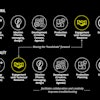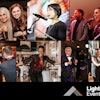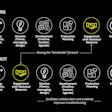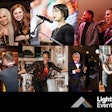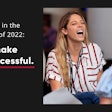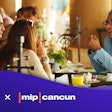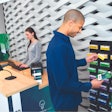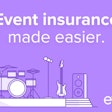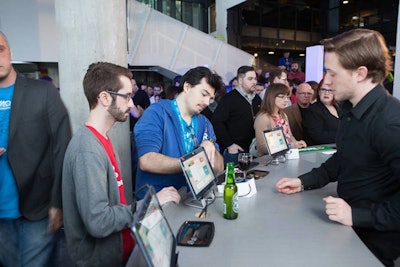
Near field communication, or N.F.C., is one of the hottest topics when it comes to wireless communication. It allows smartphones to communicate with readers and other N.F.C. devices across a short range of no more than a few inches and has application for mobile payments, lead retrieval, social media strategy, and more. Research firm I.H.S. Technology predicts the number of phones equipped with N.F.C. technology will surge in the next few years, reaching 1.2 billion units by 2018.
N.F.C. was one of several communication systems explored at RFID Journal Live, a conference and trade show held April 8 to 10 at the Orange County Convention Center. Anthony Palermo, co-founder of consulting and engineering firm Connect & Go, shares these examples of how his company is incorporating N.F.C. tags into wristbands used at conferences, concerts, promotional events, and other large-scale experiences.
1. Access Control
Place N.F.C. readers at the doors to your event to digitally track guests as they enter and exit, eliminating the need for guests to show a paper ticket or an email with a bar code. As a tag is scanned, it also stores a time stamp so planners can understand when people arrived and departed. That data can be even more specific if the tag is associated with the guest’s demographic information, for example to sort arrival times by age. “It’s all the things we think we know, but when we have this data, it starts to make it concrete, and we can use it to make decisions,” Palermo says. "Let’s say if your sponsor is specific to an older demographic, you can say, 'I’m only going to advertise your stuff between this hour and this hour because that’s when you are going to get the biggest bang for the buck.'" Unlike non-digital wristbands, N.F.C. bands also can reduce fraud since they cannot be reused by multiple guests.
2. Accreditation
If your event has different types of access, such as general admission and V.I.P., the N.F.C. tag can be preloaded with that information. When the tag is scanned, the display on the reader instantly shows whether the guest should be admitted into a specific area, such as an executive lounge. “It keeps the environment secure and makes the process that much easier because there’s nothing to figure out at the door,” Palermo says. Tags can also be digitally deactivated to eliminate access if necessary.
3. Cashless Payments
There are multiple ways to use the N.F.C. wristband as a digital payment system at events. Credits can be linked with each tag, such as to give each attendee a set number free drinks, or planners can ask guests to link a credit card with their bands. In that case, either a fixed amount of money can be loaded into the system and purchases are debited from the balance, or charges can be accrued as they take place. “I think [cashless payment] is probably the fastest-growing application we’ve been asked to deploy,” Palermo says.
4. Social Media
Keep your guests off their phones and focused on your event by using an N.F.C. band to provide effortless sharing on social networks. Planners can invite guests to link their wristbands to their Twitter, Facebook, and LinkedIn accounts, and then their activities on site can be shared instantly. Examples include an automatic Facebook check-in as the guest swipes into the event or the sharing of photos taken at a photo booth. “You can’t pay for that kind of advertising and social reach from a corporate side. It’s consumer-to-consumer advertising for your brand,” Palermo says.
5. Gamification
To encourage guests to authorize social sharing, Palermo suggests clients use game-based strategies to reward them for participating. For example, if an event has five photo booths, hosts can offer a prize to guests who visit each one and allow those photos to be shared on their Facebook page. The same concept can be used to encourage guests to visit all sponsors or to attend all keynote sessions. Each swipe of the N.F.C. wristband tracks guests’ activities, and that data can be shared on leader boards.
6. Post-Event Rewards
Extend the engagement with your guests after your event by offering an incentive to reuse their wristbands in some way. For example, a retail sponsor might offer a discount to people who show their wristband when they make a purchase, or hosts can offer a reduced ticket price for future events.
7. Analytics
The more the tags are incorporated into the event, the more data they can provide to planners. The information can also be cross-referenced with survey results to provide context to the feedback. “You can dig down to the individual and say, 'How did this individual act?' For example, if you get a complaint, you can drill down and see what the interaction was. Or for positive feedback—was it mostly from people who engaged a lot or a little?” Palermo says. “It allows you to understand how to make it better next year.”

